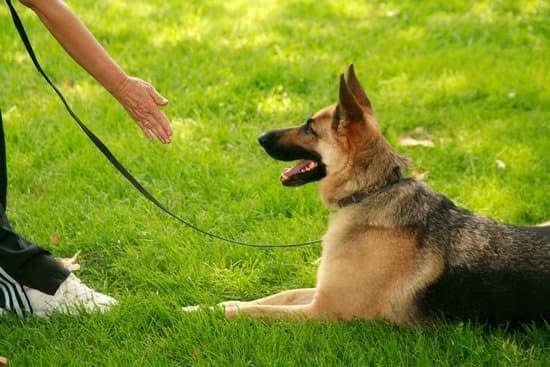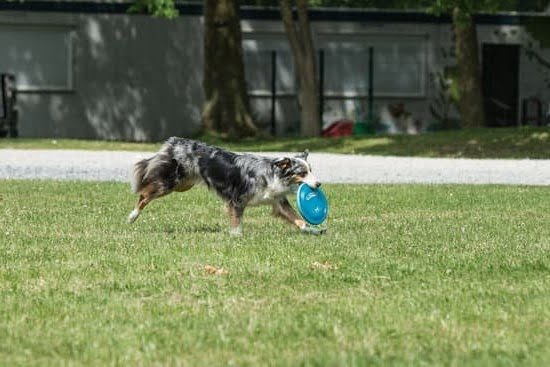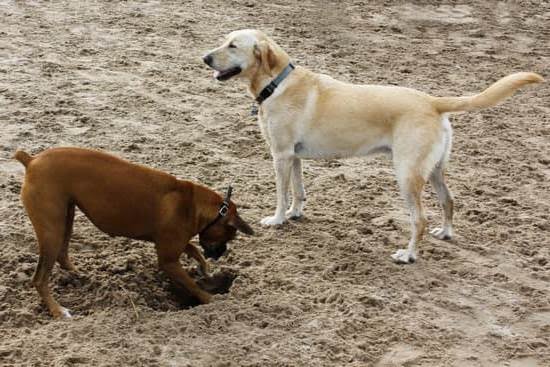Are you wondering, “How do I train my dog to come on command?” Training your dog to come when called is not only a matter of obedience, but also a crucial aspect of keeping them safe. In this article, we will explore the importance of teaching your dog to come on command and provide you with the basic and advanced training techniques to achieve a reliable response from your furry companion.
When it comes to training your dog, teaching them to come on command is an essential skill that could potentially save their life. Whether it’s preventing them from running into the street or simply having them return to you in the park, a strong recall command can make all the difference in ensuring your dog’s safety and well-being.
To successfully train your dog to come on command, it’s important to build a strong foundation of communication and trust with your pet. This involves understanding their behavior and body language, as well as being consistent and patient in your training efforts. Additionally, choosing the right rewards and reinforcements for training will play a key role in motivating your dog to respond reliably to the come command.
The Basic Training Techniques for Teaching Your Dog to Come on Command
Training your dog to come on command is an essential skill that can ensure their safety and well-being. Whether you’re at the park, in your backyard, or out for a walk, having control over your dog’s movements can prevent them from getting into dangerous situations. So, how do I train my dog to come on command?
The first step in training your dog to come on command is to establish a positive association with the word “come.” You can do this by using treats, toys, or praise every time your dog comes when called. This will help them understand that coming to you results in something positive.
Another key technique is to practice in a controlled environment with minimal distractions. Start indoors or in a fenced-in area where your dog is less likely to be distracted. Once they consistently come when called in these settings, you can gradually increase the level of distraction.
Consistency is crucial when teaching your dog to come on command. Always use the same cue or command, and avoid calling them for anything negative such as giving them a bath or putting them in their crate. Additionally, never punish your dog for not coming when called, as this will only create a negative association with the command.
| Technique | Description |
|---|---|
| Positive Association | Use treats, toys, or praise to associate coming when called with something positive. |
| Controlled Environment | Start training in an indoor or fenced-in area with minimal distractions. |
| Consistency | Always use the same cue or command and avoid calling them for anything negative. |
Setting the Foundation
Building a strong relationship with your dog is crucial for successful training, especially when it comes to teaching your dog to come on command. When your dog trusts and respects you, they are more likely to respond positively to your commands. Here are some key aspects to consider when setting the foundation for a strong relationship with your furry friend.
Establishing Trust and Respect
The first step in building a strong relationship with your dog is to establish trust and respect. This can be achieved through positive reinforcement, consistency, and clear communication. Avoid using physical punishment or harsh methods, as this can erode trust and create fear in your dog.
Quality Time and Bonding
Spending quality time with your dog is essential for building a strong bond. This includes regular walks, playtime, and engaging in activities that your dog enjoys. When your dog feels loved and valued, they will be more eager to please you and follow your commands.
Effective Communication
Understanding your dog’s body language and vocal cues is key to effective communication. Pay attention to how your dog responds to different situations and adjust your training methods accordingly. Consistency in commands and cues will help reinforce the message you are trying to convey.
By focusing on these foundational elements of building a strong relationship with your dog, you will create a solid framework for successful training, including teaching your dog to come on command.
Choosing the Right Rewards and Reinforcements for Training
When it comes to training your dog to come on command, choosing the right rewards and reinforcements is crucial for the success of the training process. Dogs are motivated by different things, so finding what works best for your furry friend is essential in making the training effective.
Types of Rewards
There are various types of rewards that you can use to reinforce your dog’s behavior when teaching them to come on command. These rewards can include treats, praise, and toys. It’s important to find out what motivates your dog the most and use that as a reward during training sessions. Some dogs may be food-motivated, while others may respond better to verbal praise or playtime with a favorite toy.
Positive Reinforcements
Positive reinforcements are key in training your dog to come on command. This means rewarding your dog with something they enjoy every time they obey the command to come. By doing so, you are reinforcing the behavior and increasing the likelihood that they will obey the command in the future. Positive reinforcements can strengthen the bond between you and your dog and make training an enjoyable experience for them.
Avoiding Negative Reinforcements
It’s important to avoid negative reinforcements when training your dog to come on command. Punishing or scolding your dog for not obeying the command can have adverse effects on their behavior and may cause them to become fearful or anxious. Instead, focus on using positive reinforcements to encourage and reward their good behavior.
Troubleshooting
Training your dog to come on command is an essential skill that can have a significant impact on their safety and well-being. However, many dog owners encounter common challenges when trying to teach this important command. One of the most frequent problems is a lack of consistency in training, which can lead to confusion for your dog. Additionally, distractions and lack of motivation may also make it difficult for your dog to understand and obey the come command.
To address these challenges, it’s crucial to establish a consistent training routine with your dog. This includes practicing the come command in different environments and gradually increasing the level of distractions. By doing so, you can help your dog generalize the behavior and understand that they are expected to come on command regardless of the situation.
Another common challenge in training your dog to come on command is using the wrong rewards or reinforcements. It’s essential to find what motivates your dog, whether it’s treats, toys, or praise, and use these effectively during training sessions. Without proper motivation, your dog may not see the importance of responding to the come command consistently.
In addition, it’s important for dog owners to recognize that every dog is unique and may require different approaches to training. Understanding your dog’s personality and learning style can greatly improve the effectiveness of teaching them to come on command.
| Common Challenge | Solution |
|---|---|
| Lack of Consistency | Establish a consistent training routine and practice in various environments. |
| Wrong Rewards/Reinforcements | Find what motivates your dog and use it effectively during training sessions. |
| Unique Personality/Learning Style | Understand your dog’s individuality and adapt training approaches accordingly. |
Advanced Training Techniques to Make Your Dog’s Response to Come Reliable
Teaching your dog to come on command is an essential skill that ensures their safety and allows for a stronger bond between you and your pet. Once you have mastered the basic techniques of training your dog to come, you can begin to advance their skills to make their response even more reliable. Advanced training techniques involve building on the foundation you have already established and adding new challenges to further strengthen your dog’s ability to come when called.
One advanced technique is the use of distractions during training. Introducing distractions such as other animals, people, or toys can test your dog’s ability to focus on your command amidst competing stimuli. Start with mild distractions and gradually increase the level of difficulty as your dog becomes more proficient in responding to the come command. This will help them learn to tune out distractions and prioritize listening to you.
Another advanced technique is teaching your dog to come from a greater distance. Begin by practicing the come command at close range, then slowly increase the distance between you and your pet. Use a long line or leash if necessary to ensure they are able to obey the command from a distance. This will reinforce the reliability of their response and prepare them for off-leash situations where they may need to come from a distance.
Finally, consider incorporating environmental factors into your training sessions. Practice the come command in different locations such as parks, beaches, or busy streets. Exposing your dog to various environments will help them generalize their response and understand that they are expected to come when called regardless of where they are. With consistency and patience, these advanced training techniques will contribute to making your dog’s response to come even more reliable in any situation.
The Role of Consistency and Patience in Training Your Dog to Come on Command
Training your dog to come on command is an important skill that can have a significant impact on their safety and well-being. Consistency and patience are key factors in successfully teaching your dog to respond reliably to the “come” command.
Consistency is crucial when training your dog to come on command. This means using the same verbal cue, hand signal, or whistle each time you call your dog to come to you. It’s also important to be consistent in your expectations and rewards for their response. Reinforcing the behavior every time your dog comes when called will help them understand what is expected of them.
Patience is another essential aspect of training your dog to come on command. Every dog learns at their own pace, so it’s important not to rush the process or become frustrated if they don’t respond immediately. Remember that patience and positive reinforcement go hand in hand. Celebrate small victories and progress, and be patient as your dog learns and improves their response to the “come” command.
When training your dog to come on command, it’s essential to keep these factors in mind in order to set them up for success. Consistency and patience are the building blocks of a strong foundation for reliable recall training.
Key points:
- Use the same verbal cue, hand signal, or whistle consistently
- Be consistent in your expectations and rewards for their response
- Practice patience and celebrate small victories during the training process
Taking Training to the Next Level
Once your dog has mastered the basic command of coming when called in a controlled environment, it’s time to take their training to the next level by adding distractions and increasing the distance at which they respond. This advanced training is crucial for ensuring that your dog’s response to the come command is reliable in a variety of real-life situations.
To successfully train your dog to come on command in the presence of distractions, start by gradually introducing mild distractions during training sessions. This could be other pets, toys, or food. Use a long leash for safety and practice calling your dog to come while these distractions are present. Gradually increase the level of distraction as your dog becomes more reliable at coming when called.
In addition to distractions, it’s important to work on increasing the distance at which your dog will respond to the come command. Start by practicing in a familiar, enclosed area with a long leash attached. Begin calling your dog from a short distance and gradually increase the distance as they become more consistent in their response.
Reward them generously for coming from longer distances, reinforcing the behavior you want to see. Remember to always use positive reinforcement and never punish your dog for not coming when called, as this can create negative associations with the command.
The Impact of Proper Training on Your Dog’s Safety and Well-Being
Training your dog to come on command is a crucial skill that can have a significant impact on their safety and well-being. By teaching your dog to come when called, you are providing them with the necessary tools to stay out of harm’s way and prevent potentially dangerous situations.
Whether it’s avoiding traffic, staying away from toxic substances, or steering clear of aggressive animals, having a reliable recall command can make a real difference in keeping your dog safe.
Additionally, proper training can also enhance your dog’s overall well-being by building a stronger bond between the two of you. When your dog learns to respond to your command, it creates a sense of trust and communication that strengthens the relationship. This, in turn, can lead to a happier and more fulfilling life for both you and your furry companion.
In conclusion, training your dog to come on command is an essential aspect of responsible pet ownership. It not only ensures their safety in various environments but also contributes to their overall happiness and well-being. By following the basic training techniques, establishing a strong foundation with rewards and reinforcements, addressing common challenges, and maintaining consistency, you can empower your dog with this valuable skill that will greatly benefit them throughout their life.
Frequently Asked Questions
Why Won T My Dog Come on Command?
There could be several reasons why a dog won’t come on command. It could be due to lack of training, distractions in the environment, fear or anxiety, or even physical discomfort.
How Do You Train a Disobedient Dog to Come?
Training a disobedient dog to come requires patience and consistency. Start by using high-value treats as positive reinforcement. Practice in a quiet, low-distraction area and gradually increase the level of distraction as your dog improves.
What to Do if Your Dog Refuses a Command?
If your dog refuses a command, it’s important not to punish or scold them. Instead, try to understand the reason behind their refusal. It could be due to fear, confusion, or simply not knowing what is expected of them.
Take a step back, reevaluate your training approach, and make adjustments as needed. Remember to always use positive reinforcement during training sessions.

Welcome to the blog! I am a professional dog trainer and have been working with dogs for many years. In this blog, I will be discussing various topics related to dog training, including tips, tricks, and advice. I hope you find this information helpful and informative. Thanks for reading!





